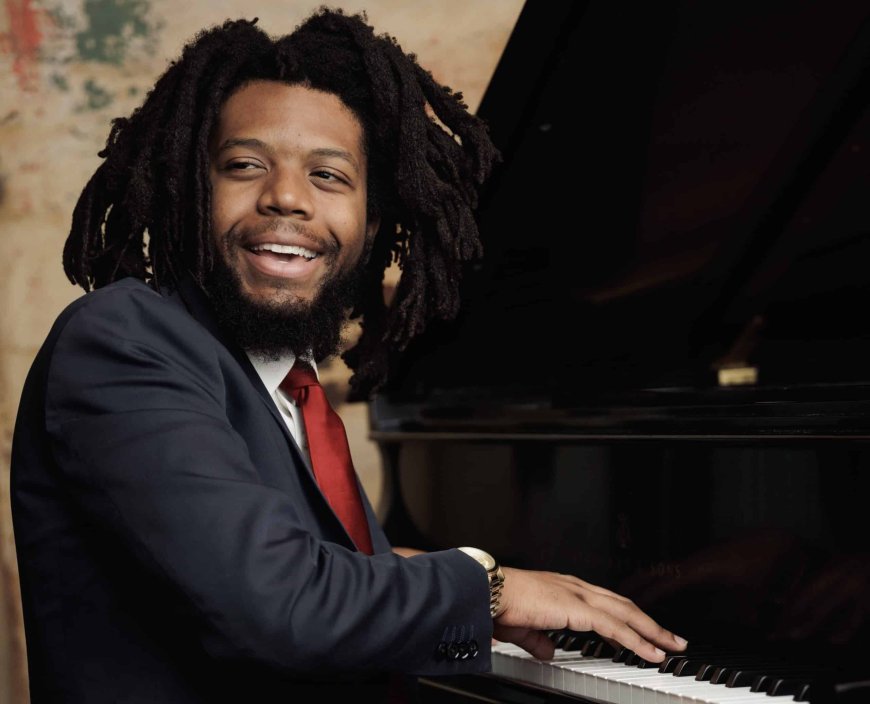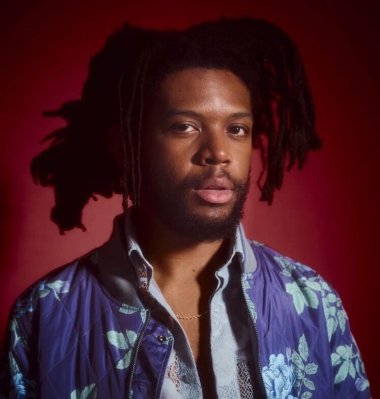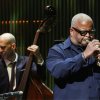
New York City is full of temptation. For a young musician on the rise, the opportunities to lose oneself amid the endless hang are plentiful. Renowned jazz pianist Sean Mason is no stranger to that experience.
“After a gig, there’s always people around who want to buy you a drink,” said Mason, who arrived in Manhattan in 2018 to attend The Juilliard School’s jazz program. Mentored by the jazz legends Branford and Wynton Marsalis, he quickly landed a series of plum gigs that established him as a startlingly resourceful accompanist with a historically expansive grasp of jazz idioms.
Mason introduced his own music with a combo he imported from his hometown of Charlotte, North Carolina. When he landed an after-hours residency at the essential West Village jazz club Smalls in 2019, he turned it into a proving ground for a New York band.
Eager to tackle a full plate of musical challenges, he played in Broadway pit bands and on film soundtracks. And when the pandemic shuttered the city, Mason helped launch The Soapbox Presents, serving as music director for the Harlem-based performing arts organization that brought a diverse roster of musical acts to the streets. He also released his critically acclaimed debut, The Southern Suite (2023), on Jazz at Lincoln Center’s label, Blue Engine Records.

Mason is scheduled to perform in the Bay Area just weeks before the release of his second album, A Breath of Fresh Air, set for Oct. 24. The new record features the same quintet as his first but captures him in a very different frame of mind. Refusing to constrain himself, Mason has expanded exponentially with an approach that seamlessly internalizes a sweeping set of cultural influences from jazz and beyond — sounds he transmutes into conversational themes for his ensemble.
Settling into the SFJAZZ Center’s Joe Henderson Lab for a three-night, six-show run Oct. 10–12, Mason anchors the organization’s annual celebration of Thelonious Monk with a solo recital on Friday, Oct. 10, which will mark the 108th birthday of the legendary pianist and composer.
Mason is in a very different place — mentally, spiritually, and physically — than when he last performed at the SFJAZZ Center in 2023. It was his breakout year, with the release of The Southern Suite establishing his reputation as a composer and bandleader. The album was hailed by NPR, DownBeat, WNYC, and other outlets as the emergence of an important new voice. He was also tapped as music director and pianist for the touring production “When You Wish Upon a Star – A Jazz Tribute to 100 Years of Disney,” an experience that he said left him feeling alienated, like he’d stumbled down the wrong path away from his true musical calling.
The New York scene had pulled him in many different stylistic directions, and the Disney tour led him to refocus his attention on his own music rather than on sideman or hired work. That was a major shift, but he had something of a negative epiphany when he got home “and a friend and I were trying to move my piano early in the morning,” he recalled. “I ended up breaking my foot and I felt like it was a sign from God that something is misaligned in my life.”
Mason is generally averse to tribute concerts — “My compositions are tributes to my influences,” he said — but Monk is a special case.
“We both have North Carolina roots,” Mason said, noting that Monk was born in Rocky Mount and moved with his family at the age of four to Manhattan’s San Juan Hill neighborhood, “where we lived on W. 63rd Street, under the street sign that says ‘Thelonious Sphere Monk Circle.’ I love Monk. I’ll play a compilation of different Monk tunes, but in a Keith Jarrett solo style flow-wise. It’s my version of a Monk tribute.”
He introduces his trio with drummer Domo Branch and bassist Felix Moseholm on Saturday, Oct. 11, with a program reaching beyond the Monk repertoire. The group makes up the rhythm section of his quintet, and, as with his two albums, Mason doesn’t believe in using sheet music in the studio or on the bandstand. With no setlist, he knows his bandmates are ready to jump into any tune he calls.
The trio shows provide a good opportunity to see two players rapidly gaining prominence, particularly Branch, who performed last weekend at the Monterey Jazz Festival with vocalist Ekep Nkwelle. Hailing from Portland, Oregon, he remembers hearing Mason play at Smalls in 2018. He knew immediately he wanted to hire him for a gig, “even though I knew I wasn’t ready to be playing with him yet,” Branch said.
By 2020, they were working together regularly, and Branch featured Mason on his 2022 debut album, We Are Made, featuring vibraphone star Stefon Harris. Like Mason, he believes in committing repertoire to memory “so you don’t have to think about anything else,” he said. “You can’t really digest a song if you don’t know it by heart.”
Mason returns to “Monklandia” on Sunday, Oct. 12, in a duo with trumpeter Anthony Hervey, a friend from their student days at Juilliard. They recorded Hervey’s “Du-Rag” as a duet and built their musical connection there.
“He was one of my first friends in New York, and we hang out outside of music,” Mason said. “He has the same perspective, where we draw on some gospel, some jazz, all kinds of stuff.”
He’s back in the Bay Area for a concert at Sonoma State’s Green Music Center on Oct. 16, appearing with vocalist Catherine Russell. Their Grammy Award-nominated 2024 duo album My Ideal put Mason in a rarefied realm alongside piano masters such as Ellis Larkins, Hank Jones, and Alan Broadbent, who recorded classic duo sessions with acclaimed jazz vocalists.
Russell is the preeminent exponent of the jazz-blues-R&B continuum that flourished so spectacularly between 1925 and 1960. Mason proved to be an ideal collaborator, deeply versed in a broad spectrum of pre-bop approaches tied to jazz’s essential roots as social music.
“I did a lot of studying to prepare for this record, looking at pre-1940s situations and the piano duo format with classic blues singers,” Mason said. “We’re drawing from a prewar sound, taking it back to when it was dance music. Even the ballads are dancing.”
Upon returning to Charlotte from New York, Mason gave up alcohol and other substances and spent time decompressing, feeling like he was surfacing after a long dive into very deep waters. He cut off old social contacts and went into hermit mode. Asking himself fundamental questions, he had to look beyond acclaim and success and figure out what kind of artist he wanted to be. In many ways, what we’ve seen so far of A Breath of Fresh Air provides a detailed response. It’s the work of an artist who’s found himself.




